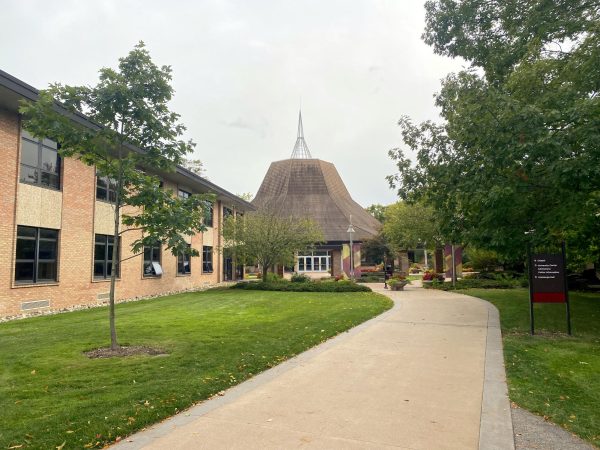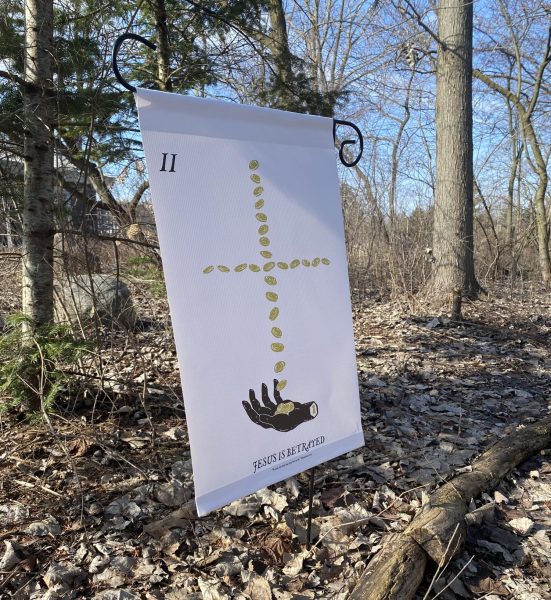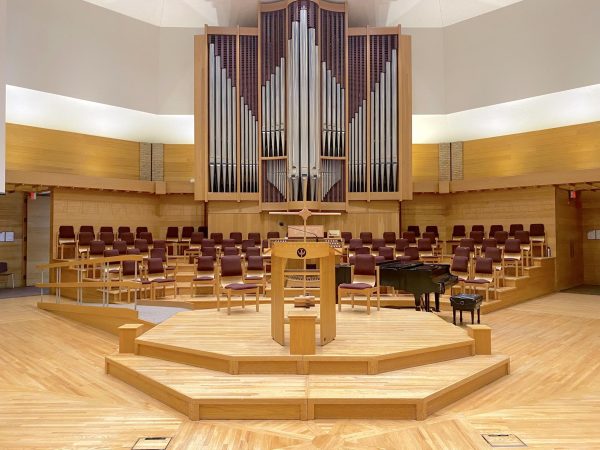Q&A with Calvin Theological Seminary President Jul Medenblik
The following is an edited, condensed version of our interview with Calvin Theological Seminary President Jul Medenblik.
Chimes: How long have you been president of the seminary?
President Jul Medenblik: I’m in my ninth year, one more year than Michael LeRoy.
Chimes: What have you enjoyed the most about your role as president interviewed?
JM: I think it is the variety of work that I do and the places I’ve been able to visit. I’ve been really privileged to be a representative of CTS around the world.
CTS is 144 years old, so in terms of length and the breadth and depth of that ministry, I’m privileged to kind of be a storyteller of that in the 21st century.
Chimes: What are you looking to accomplish as president?
JM: I think a little role is always to be a part of an institution that’s forming students for God’s kingdom and God’s service. If you think of providing theological education, it’s really beyond just pastors. We had people in this building who, for example, are nurses who are people at the front lines of grief ministry.
Chimes: How has the student makeup changed in the last 20 years?
JM: I was a student here in the early 1990s and I think that was the beginning of a lot of second career people. And we’ve seen that continue to grow and develop.
The other change probably would be the fact that there are more students here looking for more than just pastoral ministry callings. They’re looking for chaplaincy ministry. They’re thinking about military hospital or school settings that they might teach in. So the variety of pastoral calling has definitely broadened.
I’ve also been privileged to be here when we started distance education: a way for people to live and work in minister where they are. This might be say a married youth pastor with three children who wants to pursue a theological degree without having to leave them. Probably about 65 out of the 300 students are in our distance program. And out of the 300 students, more than half of them are non CRC.
That’s another change: demographics. When I went through CTS in the early nineties, I’d say it was 90% CRC students, but now it’s more like 45% are CRC. The other difference would be the international students. The Seminary went from being rather limited in terms of number of countries or number of students. And now about 45% of our students are from the world outside of the US.
Chimes: In your Master of Divinity program, is there a large difference in the number of male versus female students?
JM: We have seen the female student population grow. Right now, we have seen 45%, I think that is the stat, for our first-degree female students.
Chimes: Is there a gender difference in post-graduation employment?
JM: There some CRC churches that are not as open for women in ministry. So, what I would say and have said to women students is that we know there’s a place for you. It might take longer for you to find them but we are committed to helping students find places in ministry.
Chimes: Do most of your graduates still minister to CRC churches?
JM: No, around 55% of our students are outside of the CRC which means they’re going back to their local denominations or local countries and they’re serving there.
Chimes: CRC ministers are no longer required to attend this seminary. Correct?
JM: Yes, actually it’s been that way for a very long time, and it’s still evolving. You could become a CRC pastor by going to any seminary, but you have to at least come to Calvin seminary for some of the basic connective classes and courses, like Christian Reformed history. When I was here in the early nineties, that was still considered a one-year requirement. Now, it’s basically nine credits. These are offered online as well to further accommodate students.
Chimes: Has changing this requirement impacted the seminary?
JM: I think that it does, it reminds us that there are also good seminars elsewhere. So it helps us, I think, ask what makes people choose other places? And that’s always a good question because it helps you analyze yourself and what you’re providing.
And I think in some ways we would come back and say that we still provide a vital linkage for the Christian Church.
Chimes: How do you picture the seminary in 2050?
JM: I think there’s a few things that are pretty clear for us right now: there’s going to be more or less of this. They’ll be more use of technology. I think we’re going to see more diversity. I also think, to what you referenced earlier, is that we’ll see continued more denominations and non-denominational churches represented in the student body.
I personally think we’re going to find that we need to provide more in time training for people. Students, rather than completing a whole degree and then getting to do some ministry, will incorporate the training and the classroom at the same time. We’ve actually made some switches in that regard already. When you first come as a student here, you’re already assigned a local church to begin working in. I think that’s actually going to grow in terms of connecting the classroom and local church at the seminary in more deep and vital ways.
Chimes: What would you say the seminary’s role is within the greater Grand Rapids community?
JM: I think just as Calvin university sees itself as part of the community, so do we. I think we need to come alongside others, especially those who might be overlooked in the access and affordability of theological education. It’s one of the reasons why we have programs like the Calvin Prison Initiative, Latino Latina ministry programs, and the distance education program.
I think that as we open ourselves up to these connections with different communities, we need to come with a listening posture and ask ourselves “what more can we do to learn together as we face issues in our society?”
Chimes: What do you see as the largest problem facing the seminary today?
JM: I think the largest problem actually is people who don’t understand the value of theological education. There is a growing assumption you may not need to study at a seminary.
I have this statement that everybody can preach one good sermon: the testimony of what God has done for you. But the question is, what kind of leader do you need to really help lead and sustain a church as a community of faith? We at the Seminary are training disciples of Jesus Christ to form communities of disciples of Jesus Christ.
We’re seeing more and more agnostic views of faith, a highly secularized culture, and issues of individualism and materialism. We’re needing to now more than ever help not only share the Christian gospel, but also help people understand its value and why Jesus came: to give life to the fullest.
Chimes: Calvin University has been facing an enrollment crisis. Is the seminary facing a similar challenge?
JM: In terms of enrollment, we’ve been rather steady, maintaining around 300 students. We are mindful of the demographic shift that, especially a University or college face. We have people who come in who are second career students or are adding education to what they’ve already been doing, so we don’t rely on the 22-year-old coming over. We are grateful for the avenues in which God continues to supply those students.
Chimes: What is the financial state of CTS?
JM: Yes, we are actually doing well. We are blessed. We have no debt as a ministry. When we say we have no debt that doesn’t mean we don’t have opportunities to grow and develop, we have been blessed with a balanced budget. In fact, within the last few years, we have been able to keep tuition to about half of what it is for a local Christian college.
I would say to those considering seminary but have hesitation because of affordability, just apply and see what scholarships might be available. Especially for women. We have a number of significant scholarships for women interested in ministry.
Chimes: The CRC is traditionally a Dutch West Michigan denomination, how do you balance that legacy with pursuing diversity?
JM: Where we come from doesn’t necessitate where we’re going to be as an institution. For example, 15% of the CRC congregation today is actually Korean/Korean America. One in six of our students comes from Korea. I think that once again, I’ve been blessed to see people who did not know about the CRC, come into Calvin summary, get exposed to CRC churches and say, “that’s the church family that I want to be a part of.”
We as a church family are not here because of certain last names. We’re here because we believe in the same things related to God and his mission in the world.
In the past, people have spoken of the CRC growing from immigration, migration and procreation. But now, our focus has to be growing because of following the mission of God.
Chimes: What do you see as the largest problem facing CRC?
JM: As mentioned earlier, I think we have identified ourselves sometimes through ethnicity, but we really have to identify ourselves regarding our mission.









